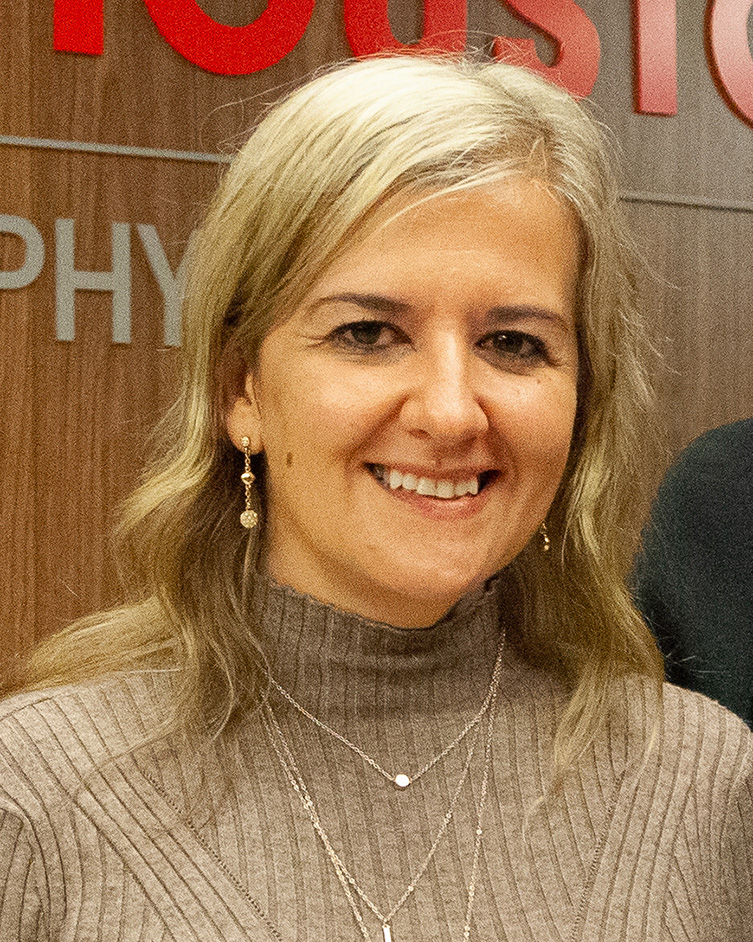Fellowship Program Recognizes Members with Exceptional Contributions to Field
The American Physical Society has elected associate professor of physics Claudia Ratti as one of its 2021 APS Fellows. This year, 155 fellows were selected.

The organization recognizes its members who have made exceptional contributions to physics through research, important applications, leadership or service, or significant contributions to physics education.
“It’s an incredible honor for me, because less than half of a percent of the APS population gets selected in a given year,” said Ratti, faculty at the University of Houston’s College of Natural Sciences and Mathematics. “It’s really something I was hoping to get, but I wasn’t really expecting it. This was the first time I was nominated. I feel very grateful to the people who nominated me and chose me.”
Ratti was specifically chosen for her, “outstanding contributions to understanding the thermodynamic properties of quantum chromodynamics matter and subsequent connecting lattice results with experimental data.”
One of Ratti’s collaborators, Massachusetts Institute of Technology professor of physics Krishna Rajagopal, said there is no doubt Ratti is fully and richly deserving of the honor.
“I could easily give half a dozen examples of ways in which she has pulled together quantitative lattice QCD calculations, judiciously chosen model analyses, insights from experiments, and in some cases, quantitative connection to experimental data, to yield new understanding of the thermodynamic properties of QCD matter,” Rajagopal said. “She is essentially unique in this combination. Her approach is built upon scientific judgment, breadth of perspective, and judicious choices, as well as calculational power. She is also making a strong contribution to our field via her mentoring of students.”
Ratti’s combination of research accolades and dedication to mentoring also garnered the praise of UH Department of Physics Chair Kevin Bassler. He said the department was delighted to attract a young scientist of Ratti’s caliber to their faculty in 2014. She had already received numerous awards in Europe, including the “Best Italian Physicist under 35.”
“(Ratti) has exceeded all of our hopes,” he said. “Her research accomplishments continue to mount, and she has proven to be an excellent teacher, communicator, and mentor … She communicates exceptionally well and consistently has among the highest student evaluations in our department … Professor Ratti is very worthy of becoming a fellow of the American Physical Society.”
In 2019, Ratti became associate chair of the department.
Bridging Experimental Data with Numerical Simulations
Ratti researches the strong force, which is one of the four fundamental forces of nature. Specifically, she studies the phase transition to the quark-gluon plasma, which physicists believe made up the early universe, from hadrons such as protons and neutrons.
“The theory which describes the strong force is called quantum chromodynamics,” said Ratti. “What I do is solve the theory through numerical simulations on what we call a lattice. It is like a discretized version of space and time. Instead of having space and time on a continuum, you have discrete cells where the quarks and gluons live.”
By solving the theory numerically, she said, she brings out the thermodynamic properties of the theory. She then connects her lattice results to experimental data. For example, the research that experimental physics groups conduct is to collide energetic nuclei to recreate the temperature and density of the early universe’s quark-gluon plasma.
“There is the experimental data on one side, and there are my predictions and my quantities on the other,” said Ratti. “A large part of my activity is to build a bridge between the two, trying to find a way to compare what the experiment produces to what I calculated.”
She has published more than 80 papers that have received 8500+ citations.
Regarding her mentorship work, Ratti simply says that it is just her style. She spends at least an hour a week with her graduate students individually, then two hours a week as a group. She also advises undergraduate students.
“I see their progress in the research,” she said. “I’m really excited for them to achieve and publish. I want them to be as well-prepared as possible. For me, part of mentoring is to give them all the tools to really succeed and try to make them feel confident about themselves.”
- Rebeca Trejo, College of Natural Sciences and Mathematics